|
|
|
Sort Order |
|
|
|
Items / Page
|
|
|
|
|
|
|
| Srl | Item |
| 1 |
ID:
183466
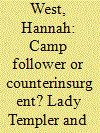

|
|
|
|
|
| Summary/Abstract |
British counterinsurgency thinking today remains strongly influenced by the Malaya Emergency (1948–1960) but little-known is the extensive women’s outreach program, pioneered by Lady Templer, involving the Women’s Institute and British Red Cross. Through discourse analysis of archival records, this article identifies four discourses characterizing British women’s participation, used, at the time, to make acceptable their presence whilst distancing them from the counterinsurgency campaign. By exploring how women’s presence has been negotiated and marginalized, I will reveal the blurred boundaries of counterinsurgency, questioning how the role of the counterinsurgent is constructed and sustained over time and for what purpose.
|
|
|
|
|
|
|
|
|
|
|
|
|
|
|
|
| 2 |
ID:
183464
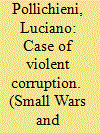

|
|
|
|
|
| Summary/Abstract |
This article provides a new perspective on the logic of violence of the JNIM in the context of the Malian civil war. After a critical review of the literature on the Malian conflict, this article will apply Benjamin Lessing’s model on the logic of violence in criminal wars to JNIM. Through the adoption of Lessing’s model, this article will demonstrate how JNIM’s insurgency can be considered as a case of violent corruption in the context of a war of constraint. Combining qualitative and quantitative methods, this paper will show firstly, how the Malian civil war should be conceived as a war of constraint rather than a war of conquest; secondly, how JNIM is using violence in order to restrict the implementation of the rule of law in some regions which are strategic also for its financing activities. By adopting this new framework, it will be possible to overcome some conundrums characterising the debate on the Malian insurgency and to highlight some relevant topics for future research.
|
|
|
|
|
|
|
|
|
|
|
|
|
|
|
|
| 3 |
ID:
183465
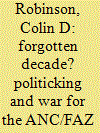

|
|
|
|
|
| Summary/Abstract |
The history of the Congo’s Armée nationale congolaise (1960–71) and Forces armées zairoïses (1971–97) between the ‘mercenaries’ mutinies’ of 1967 and the two Shaba incursions is worthy of further research. President Mobutu wished to make sure that the ANC/FAZ presented no threat to his rule, against the backdrop of scores of military coups going on across the breadth of Africa. Three key themes are evident in the history of the ANC/FAZ from 1967 to 1977, and are examined here for the first time. Mobutu controlled his armed forces mostly through divide and rule tactics, and most of the first theme discussions will focus on those affairs. The second theme is connected in a way to the first; the succession of favored praetorian guard formations. Thirdly the military linkages between the Zairian Angola incursion of 1975 and the following attempted Katangan exiles’ return to Shaba in 1977 and 1978 are sketched more strongly. A link between the second and third themes is provided by a solid background, for the first time, for the establishment of the Kamanyola Division, long an anomaly amongst Mobutu’s favored forces.
|
|
|
|
|
|
|
|
|
|
|
|
|
|
|
|
| 4 |
ID:
183462


|
|
|
|
|
| Summary/Abstract |
Following their victory in the Chinese Civil War, the Chinese Communists initiated a nationwide counterinsurgency. In Guangxi, a mountainous province at the China-Vietnam border, anti-communist rebels waged an insurgency from 1949 to 1952, hoping that foreign support and Cold War rivalries could eventually restore the ancien régime. This research investigates the counterinsurgency in Guangxi, one of the more mutinous provinces in post-Civil War China. By situating the Guangxi counterinsurgency in the global context, this article aims to contribute to the discussion of Chinese counterinsurgency strategy, experience and how the People’s Republic’s triumphed over the armed resistance.
|
|
|
|
|
|
|
|
|
|
|
|
|
|
|
|
| 5 |
ID:
183467
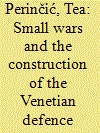

|
|
|
|
|
| Summary/Abstract |
In the early modern period, there were some parts of Europe that tensions never ended. As part of the great Ottoman expansion, skirmishes, robbery, and taking slaves occurred almost on a daily basis in Dalmatia from the 15th to 18th centuries. At the beginning, the Venetian defence of the Dalmatian coastal communities was based on small mercenaries’ troops and locally recruited men. The establishment of a complex defence system of Military Border i.e. Krajina based on new human power provided by Morlach immigrants was possible only after few great wars in the 18th century.
|
|
|
|
|
|
|
|
|
|
|
|
|
|
|
|
| 6 |
ID:
183463
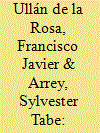

|
|
|
|
|
| Summary/Abstract |
Political violence has uninterruptedly afflicted Somalia since its independence. That amounts to 60 years of uninterrupted conflict, quite a record in contemporary history. For that reason, Somalia has been considered as one of the epitomes of what is known as an intractable conflict and Intractable Conflict Theory (ICT) has used the country as a laboratory to test its frameworks. However, we contend that systemic and very overarching frameworks such as ICT are not very useful to understand the intractability of Somalia’s conflict. This paper proposes instead a historically grounded structural-processual analysis that explains the conflict as the result of the chronological accumulation and dysfunctional overlapping of several sets of structures an actors within Somalia’s society itself and the Horn of Africa leading to the creation of very deep fault lines that create a criss-crossed fabric of conflicting interests, separating and pitting social actors against each other.
|
|
|
|
|
|
|
|
|
|
|
|
|
|
|
|
|
|
|
|
|